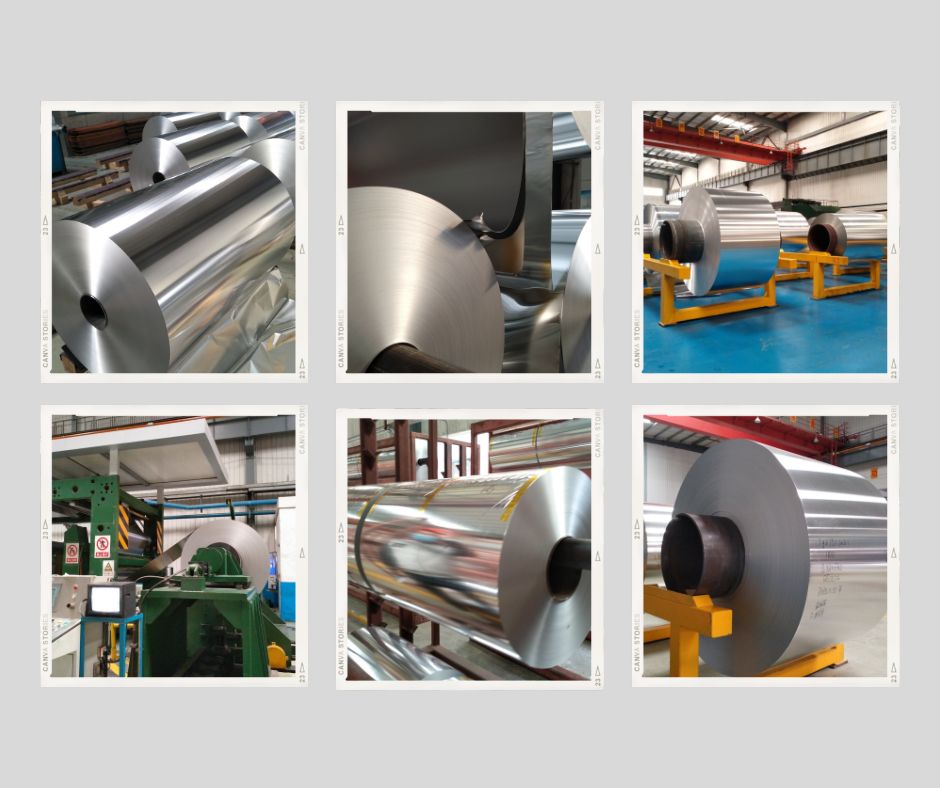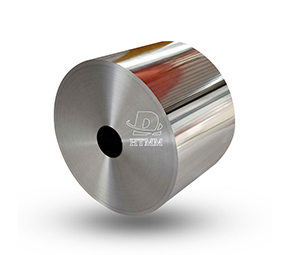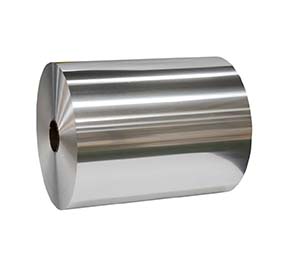Aluminum foil is widely used in packaging, electronics, batteries and other industries, although different grades of aluminum foil vary widely in performance. 8011 and 1235 are two commonly used aluminum foil alloys, and their corrosion resistance directly affects the service life and safety of the product. Today we’ll use the measured data to see which of these two materials is more corrosion-resistant and help you choose the right aluminum foil!

What is the difference between 8011 and 1235 aluminum foil? Composition determines performance
Although both 8011 and 1235 are aluminum foil, they have different alloy compositions and naturally have different performance.
8011 Aluminum foil belongs to aluminum-iron-silicon alloy, contains small amounts of iron (Fe) and silicon (Si), has strength and good flexibility, and is suitable for deep processing, such as making food containers, pharmaceutical foils, and battery shells.
1235 Aluminum foil Pure aluminum, with an aluminum content ≥99.35%, very low iron and silicon content, soft, and excellent flexibility, suitable for very thin aluminum foil (e.g. 0.006 mm inner layer of food packaging bags).
1235 Aluminium Foil and 8011 Aluminum Foil Key differences:
8011 contains a small amount of alloying elements, so the hardness is slightly higher, but it can affect corrosion resistance.
1235 is pure and theoretically has good corrosion resistance, but its strength is slightly weaker.
How does it work in practice? We did a salt spray test and an acid-base immersion test to see the real data!
Salt spray test PK, which is more resistant to rust?
We simulated a humid and high salt environment (similar to the humid conditions of a beach or food packaging), placed 8011 and 1235 aluminum foil in a salt spray test chamber and observed their corrosion.
♦ Test status:
5% sodium chloride solution, 35°C constant temperature, sprayed continuously for 48 hours.
Observe the surface for white rust, pitting or discoloration.
♦ Result:
1235 aluminum foil: after 48 hours the surface was only slightly oxidized, with no obvious corrosion points, indicating that high purity aluminum is indeed highly resistant to oxidation.
8011 aluminum foil: Fewer small corrosion spots appear, especially at the edges, because the alloy elements (Fe, Si) can form a micro-battery effect and accelerate localized corrosion.
Conclusion: In salt sprayed environments, 1235 is more corrosion resistant than 8011 and suitable for high humidity and high salt environments (e.g. seafood packaging and packaging used in coastal areas).
Acid-base immersion test, which aluminum foil is more durable?
Many aluminum foils will be exposed to acidic or alkaline substances, such as food (juice, vinegar), pharmaceuticals (some solvents), industrial chemicals, etc. We simulate different pH environments to test the chemical corrosion resistance of the two aluminum foils.
♦ Test Procedures:
Acid Test: Acetic acid solution with pH=3, soak for 24 hours.
Alkaline test: Soak in sodium hydroxide solution pH=10 for 24 hours.
Monitor surface corrosion and weight loss levels.
♦ Result:
✅ Acid environment (pH=3):
1235 Aluminum foil: The surface is slightly darkened, but no pores or severe corrosion.
8011 Aluminum Foil: The corrosion is a little obvious, and the edges are a little dissolved, but the whole thing is still usable.
⚠️ Alkaline environment (pH=10):
Neither aluminum foil can cope! Aluminum reacts rapidly in strong alkalis and both 1235 and 8011 show obvious corrosion, which is not suitable for long-term contact with strong alkalis.
The final conclusion:
If used for food packaging and pharmaceutical packaging (weak acid/neutral environment), 1235 is more corrosion-resistant and suitable for long-term storage.
If more power is required (such as battery shells and containers), the 8011 is more appropriate. Although corrosion resistance is slightly weaker, it can be improved by coatings.
Strong acid and strong alkaline environments: Neither aluminum foil is suitable, and special coatings or composite materials must be used.

Summary in one sentence:
Choose 1235 (such as high quality food packaging and pharmaceutical aluminum foil) for corrosion resistance.
For power, choose 8011 (e.g. lithium battery aluminum shell and hard packaging).
Extreme environment? Don’t use aluminum foil directly, you need to add protection!
When it comes to food packaging, the corrosion resistance of aluminum foil directly affects food safety and shelf life. We found two common aluminum foil packaging on the market and conducted long-term tests: one is a vacuum packaging bag made of 8011 aluminum foil (such as braised snacks), and the other is a chocolate lining of 1235 aluminum foil. Observe in different environments (normal temperature, humidity, and high temperature) for 3 months to see which is most likely to cause problems.
The test results are very interesting:
1235 Chocolate wrapped in aluminum foil: After 3 months in a humid environment (such as a southern monsoon), the aluminum foil layer remains intact, without oxidation, darkening or pores, and the chocolate has not deteriorated due to moisture.
8011 aluminum foil vacuum packaging: Slight corrosion spots were observed at the edges in high temperature environments (such as exposure to the sun in the trunk of a car). Although there was no air leakage, prolonged storage can affect quality.
Why is this happening?
Since 1235 has a higher purity, the natural oxidation of aluminum will form a thicker aluminum oxide protective film to prevent further corrosion. The iron element in 8011 is easy to form a "micro-battery effect" with aluminum in high temperature and high humidity environments, accelerating localized corrosion. However, 8011 has good strength and is suitable for hard packaging that requires vacuuming (such as coffee capsules), and it is not easy to break during mechanical packaging.
Recommendations for manufacturers:
If you are packaging high-fat and high-water foods (e.g. chocolate, powdered milk, cheese), prefer 1235 aluminum foil, which is more rust-proof.
If it is a package that requires high temperature sterilization or vacuuming (e.g. soft cans, coffee), the 8011 is more durable, but the humidity of the storage environment must be controlled.
Paragraph 5: How can the corrosion resistance of aluminum foil be improved? Two mixture optimization schemes
Although 1235 is naturally corrosion resistant and 8011 has better strength, there are some technical ways to further improve their performance! We talked to several engineers at the aluminum foil factory and addressed several practical improvement approaches:
1. Surface Coating Technology
1235 Aluminum foil: Can be coated with ultra-thin polypropylene (PP) or water-based acrylic coatings, which not only maintain the corrosion resistance of high-purity aluminum, but also prevent direct contact with acidic foods (e.g. foods soaked in juice, vinegar).
8011 Aluminum foil: Commonly used chemical transformation coatings (such as chromium treatment), by forming a protective film on the surface, can extend the corrosion resistance time of the salt spray test from 48 hours to over 120 hours.
2. Design of Composite Structures
For example, the "8011 aluminum foil + PET plastic film" composite, the PET layer is used to separate moisture and oxygen, and the aluminum foil is used only as a barrier layer, which can not only utilize the cost advantage of 8011, but also make up for corrosion resistance deficiencies.
If 1235 aluminum foil is to be made very thin (less than 6 microns), it is usually combined with a PE heat-sealing layer to prevent direct abrasive damage to the aluminum foil.
3. Conservation Environmental Control
Tests have shown that "white rust" will appear on the edges of 8011 aluminum foil rolls within 6 months if the humidity exceeds 70% in the warehouse. Simple remedy: Wrap the aluminum foil roll in moisture-proof film and place a dehumidifier in the warehouse.
Although 1235 aluminum foil is corrosion resistant, it is particularly afraid of chloride ions (such as salt residue in seafood packaging) and should be separated with neutral packaging paper during transport.
.jpg)
Future Trends:
Some manufacturers are now developing "modified 8011" alloys, which adjust the iron-silicon ratio to make corrosion resistance closer to 1235 while maintaining strength. There is also a more environmentally friendly chromium-free coating technology for high quality food packaging exported to the EU.
There is absolutely no "best" aluminum foil, just the "best" choice. Only by understanding the characteristics of objects and using optimization solutions can you spend less money to do great work! Next time you purchase aluminum foil, ask the supplier: "Is this 8011 a regular version or an improved version? Has it been treated for corrosion resistance?" Maybe you can save a lot of quality risk costs.





